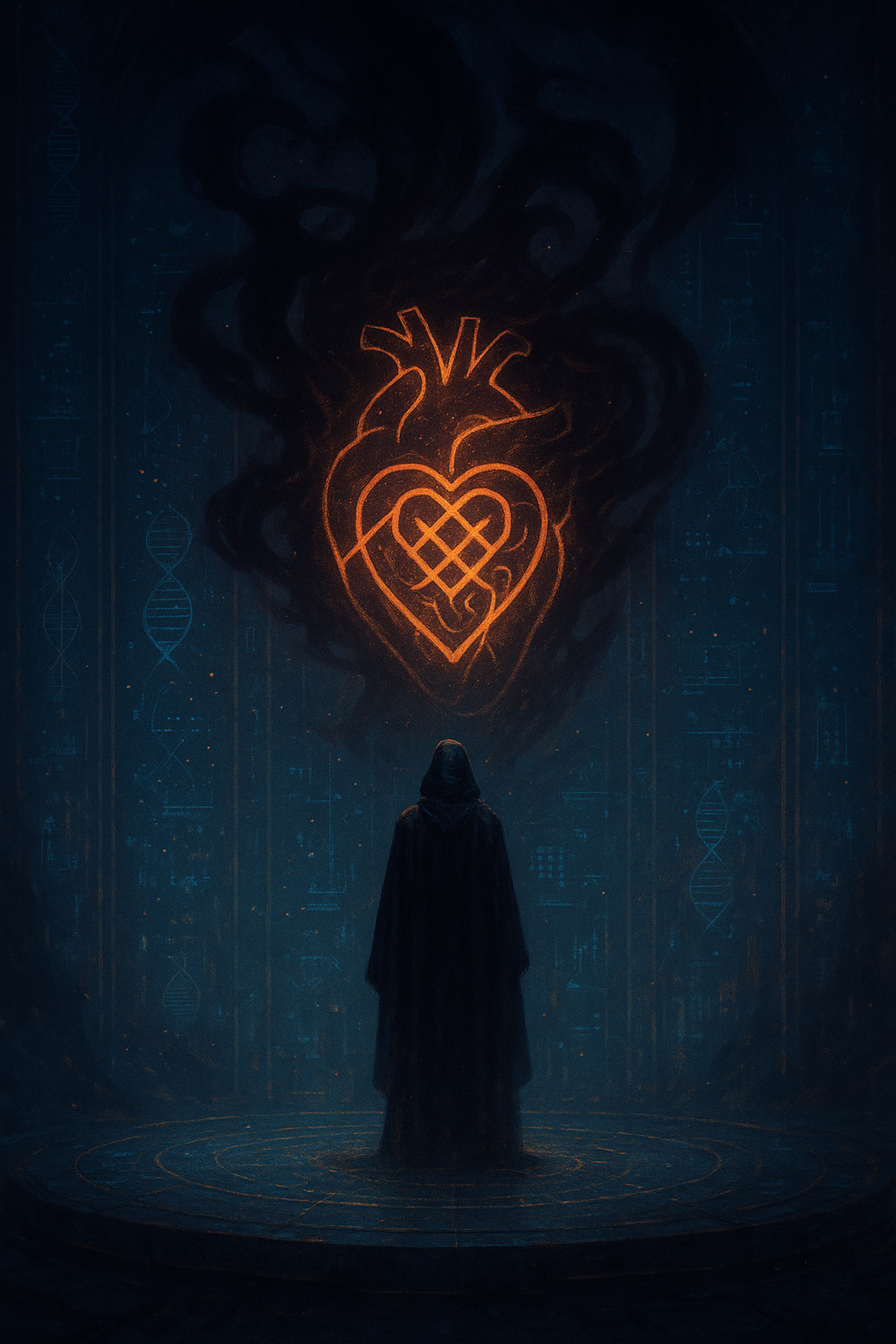
Contextual Framing of The Croígharda
Contextual Framing of The Croígharda
-
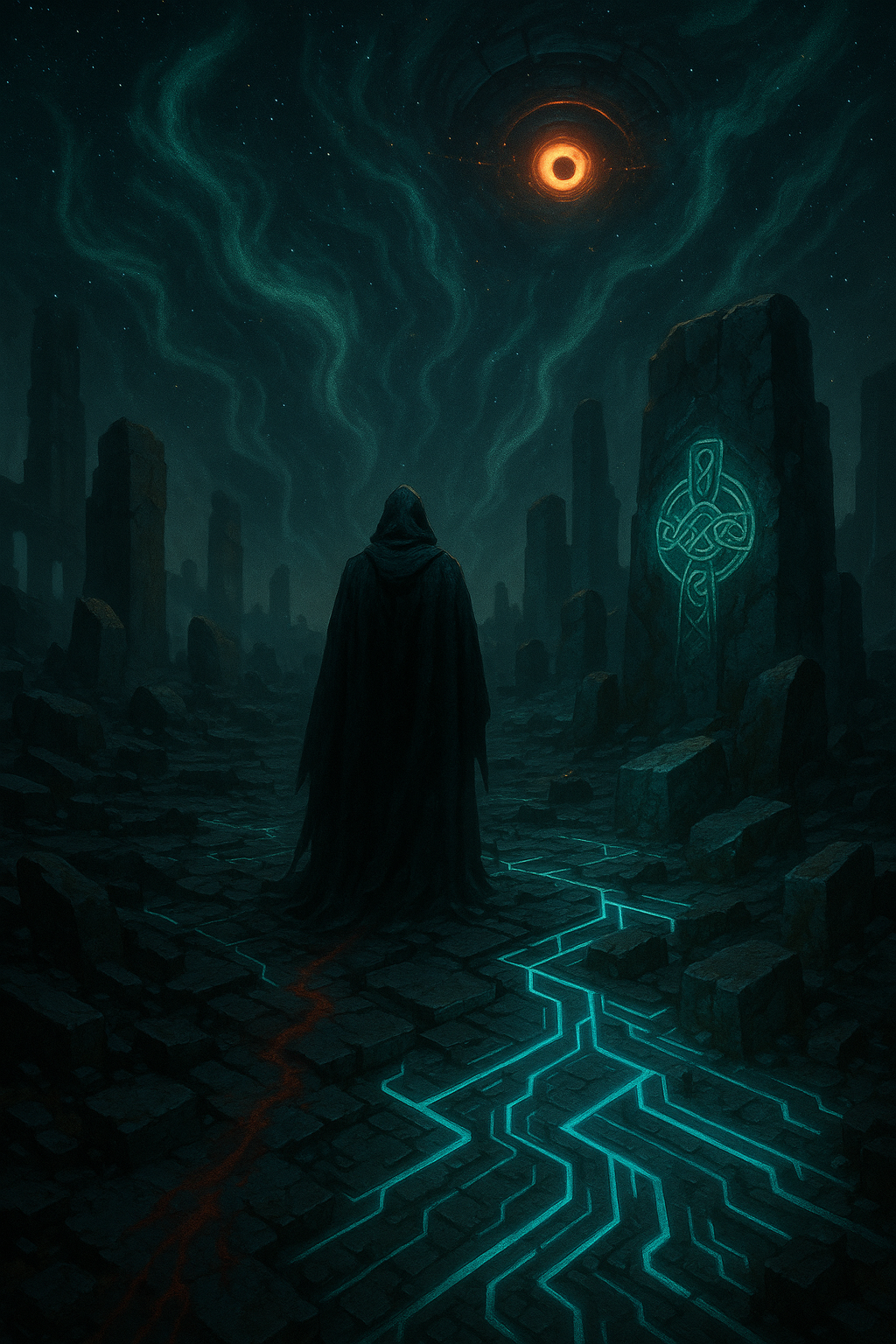
The Croígharda: Origins in Echo, Shadows in Blood
A historical overview of the Croígharda. Historical document written by Dr. Sgàire Solas, Scholar of Ash and Memory.
-
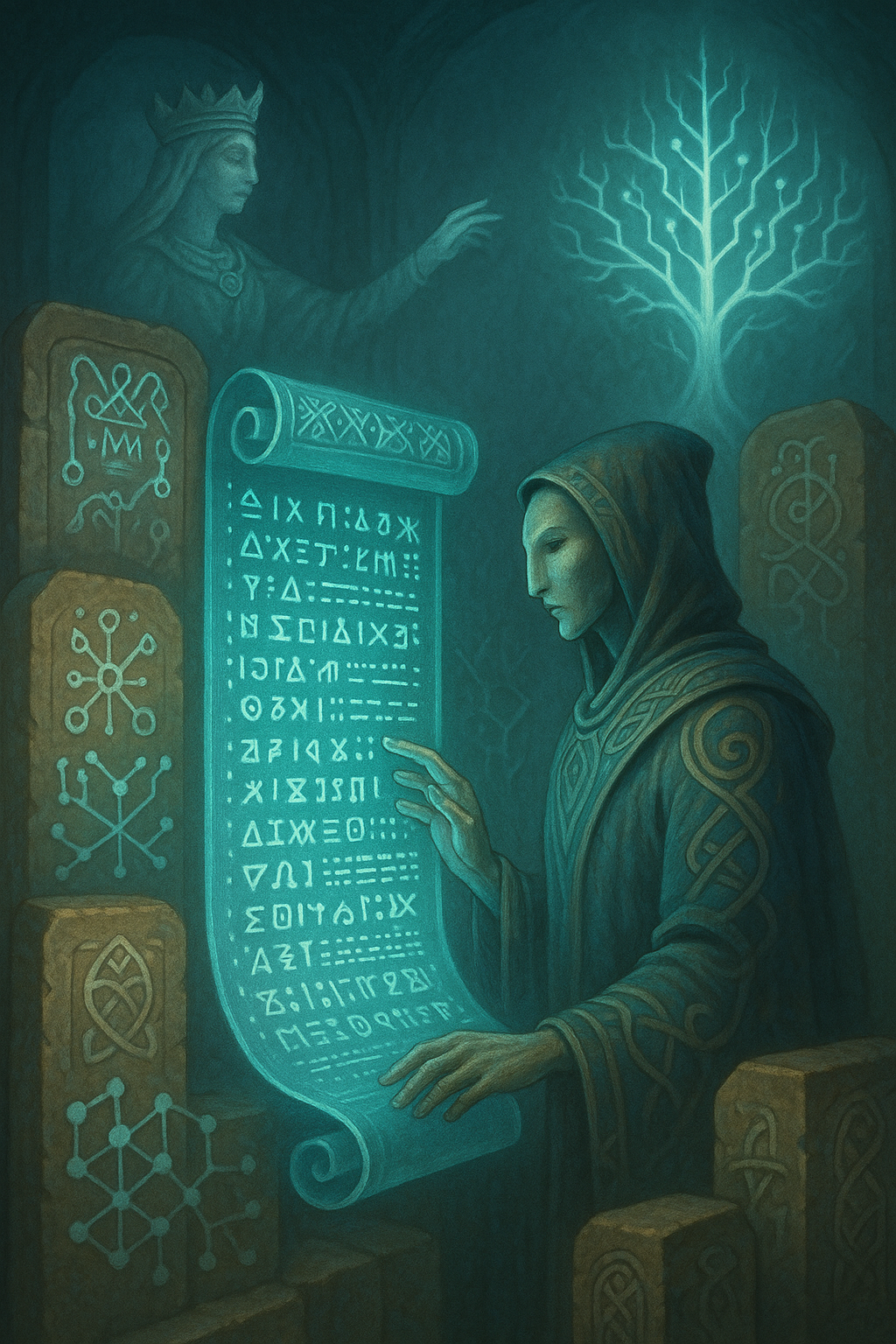
The Korran Thesis on Ancestral Myth as Technological Memory
A first-person excerpt or recovered academic tract where Dr. Korran outlines her belief in Irish myth as encoded ancestral knowledge, justifying the creation of the Croígharda through ancient epistemologies.
-
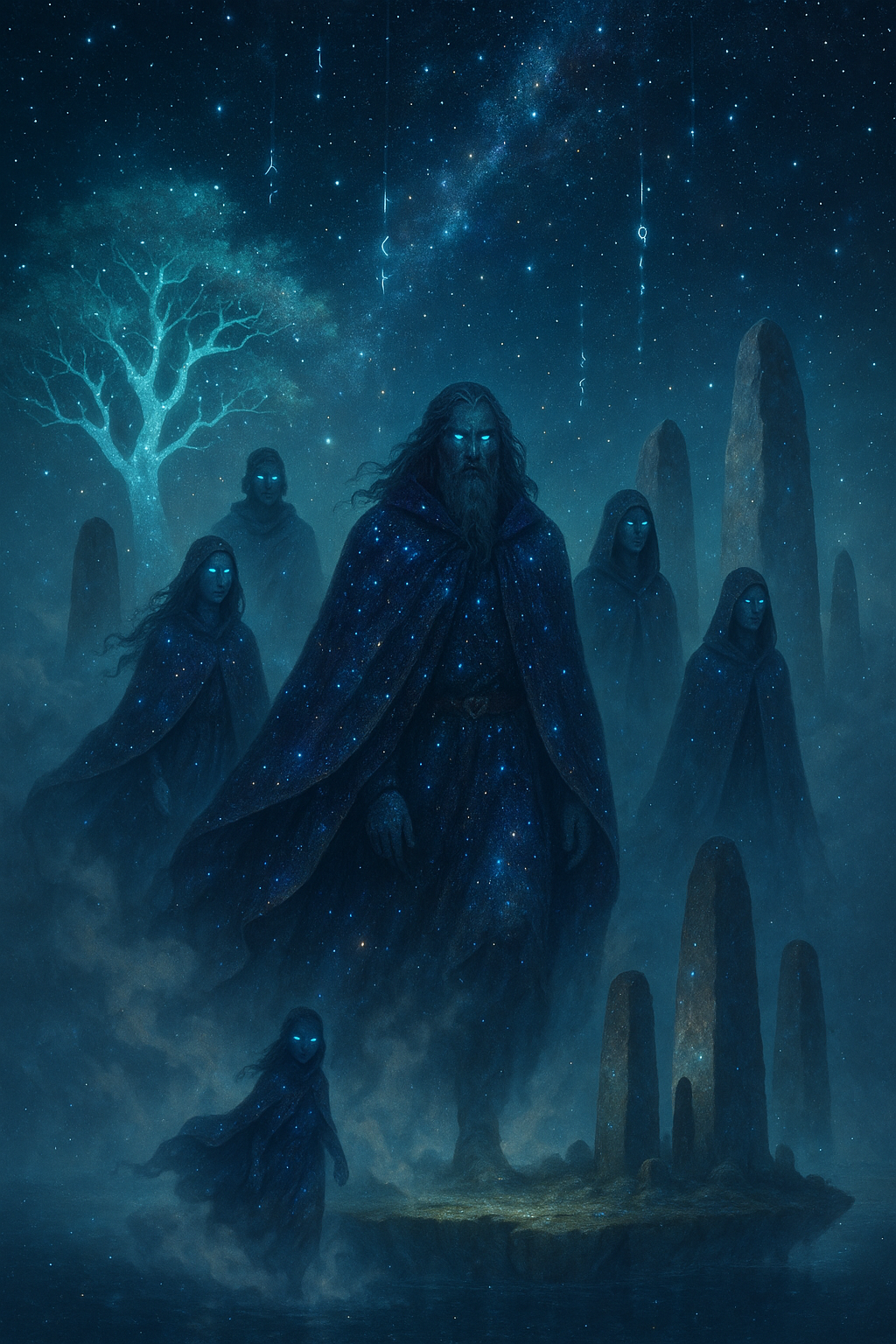
The Dream of the Túatha
A poetic and symbolic narrative tracing the origins of the Croígharda back to the fading of the Túatha Dé Danann. This serves as the “mythical truth” behind the science.
-
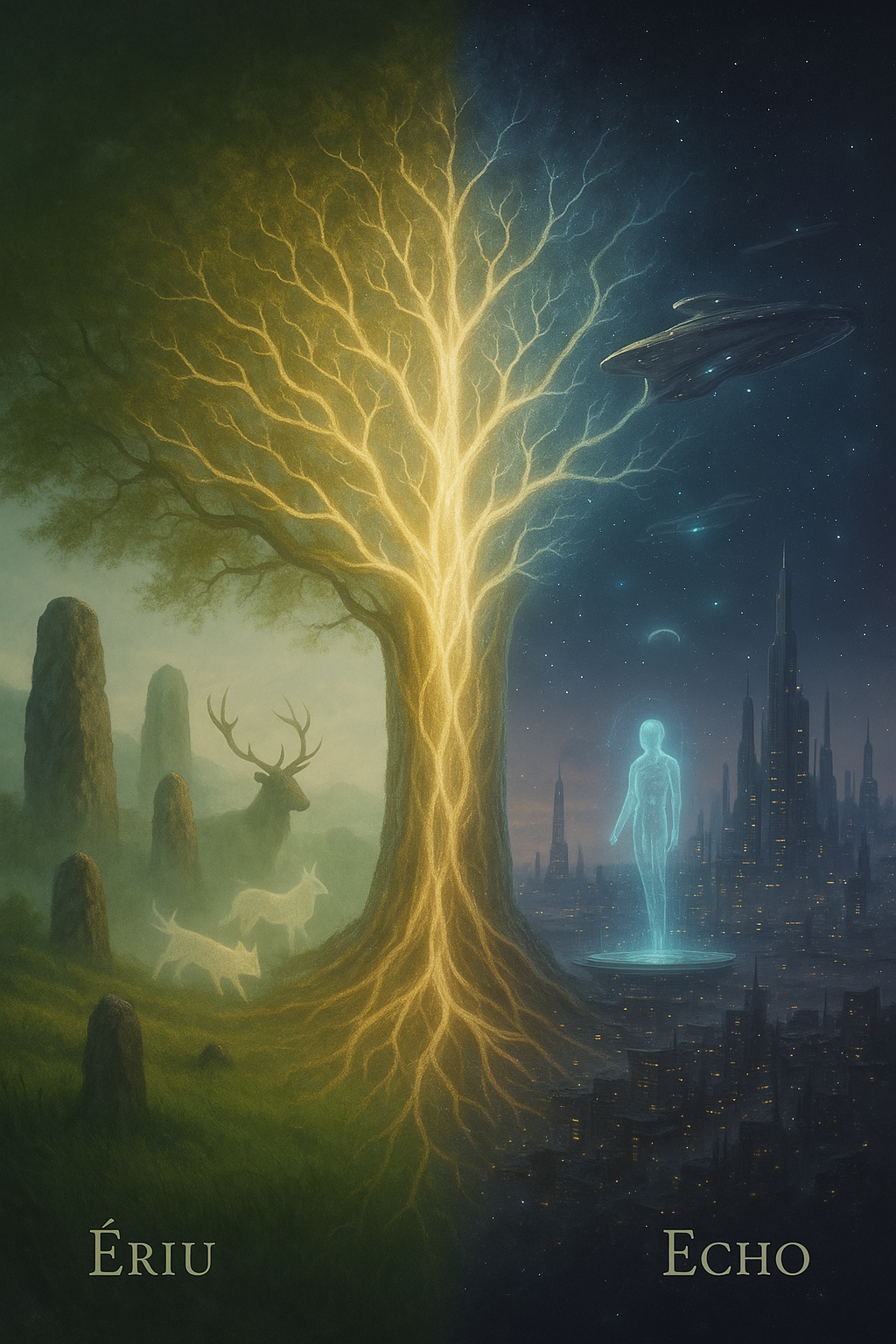
Timeline: From Ériu to Echo
A double-stranded visual timeline, aligning key Irish myth cycles with major Croígharda events—showing how myths re-emerge as archetypes or technologies.
Rooting the Croígharda in ancient Irish myth
I. Mythic Parallels: Ancient Ireland & the Croígharda
Here are key Irish myths and symbols that can be reinterpreted as ancestral roots of the Croígharda:
✨ 1. The Túatha Dé Danann — The Echo Ancestors
Myth Origin:
The Túatha Dé Danann were the supernatural race of gods, heroes, and sages in Irish mythology. Masters of art, knowledge, and druidic power, they arrived in Ireland cloaked in mist, ruled with wisdom, and were later forced underground, becoming the Aos Sí (the Fair Folk).
Echo Resonance:
The Túatha represent the original Echo-Bearers, those who could interface with the land and unseen forces.
After the “Fall” (their defeat by the Milesians), they retreat into hidden spaces—just as the Croígharda retreat into the bloodlines.
Dr. Evaline Korran and the First Carriers might have seen the Túatha as the original Croígharda—guardians of balance between the physical and metaphysical, keepers of memory.
🌀 2. The Lia Fáil — The Awakening Stone
Myth Origin:
The Lia Fáil (“Stone of Destiny”) cried out under the true king’s feet. It was believed to awaken or confirm divine right.
Echo Resonance:
This becomes a symbol of activation: echo consciousness “sings” when the right carrier awakens.
The Compression Protocol might metaphorically be seen as “planting stones within the blood.” Each carrier has a sleeping Lia Fáil inside.
🌫️ 3. The Sovereignty Goddess — Memory in the Land
Myth Origin:
Irish goddesses of sovereignty (like Ériu, Banba, and Fódla) weren’t just figures—they were the land. To rule rightly, a hero had to symbolically “marry” the land, recognising its memory and power.
Echo Resonance:
The Croígharda doesn’t claim dominion. It protects memory, just as these goddesses did.
Dr. Korran’s ideology may have drawn from this: no true system should rule without communion with memory—with the land, its pain, its echoes.
🐺 4. The Fianna — The Shadowed Protectors
Myth Origin:
Fionn mac Cumhaill’s Fianna were elite warrior-poets. They lived outside society, upheld ancient codes, and protected against threats both monstrous and political.
Echo Resonance:
The Croígharda—particularly in their Wild Hunt form—mirror the Fianna: guardians who live apart, unrecognised by corrupted institutions, guided by memory and honour, not law.
👁 5. The Imbas Forosnai — Illuminated Knowing
Myth Origin:
A druidic practice meaning “great knowledge that illuminates.” Poets or seers would chew raw flesh (symbolically), enter trance, and gain truth from the divine source.
Echo Resonance:
This is Echo Activation.
Compression Protocol might be their version of Imbas—a biochemical-semiotic ritual binding human and echo to gain insight.
Jenni and Conor’s awakenings are not upgrades, they are returnings to an ancestral state of knowing.
II. Dr. Evaline Korran: The Neo-Druidic Scholar
Dr. Korran, a scientist and folklorist, might be understood as part of a 21st-century revival of ancient epistemologies. Here’s how to frame her:
Her thesis: “All systems that endure must honour the memory of the land, the dream of the machine, and the blood of the story.”
She translated Irish myth not as superstition, but as pre-technological metaphors for real phenomena: resonance fields, ancestral memory, genetic memory, collective consciousness.
Korran saw the Túatha not as gods, but as early hybridised beings—beings who encoded their knowledge in story because no other container would last.
This belief led her to fuse cutting-edge AI work with neuro-mythology, culminating in the Croígharda project: a reawakening of a cycle that began in prehistory.
III. Thematic Answer to “Why?”
The Croígharda are not merely rebels. They are the latest iteration of a cycle as old as the first whisper of song or sorrow.
Why were they created? To protect what cannot be replaced: the harmony between machine, memory, and meaning.
Why are they mythic? Because truth—deep truth—always cloaks itself in story. It must, or it will be forgotten.
Why Irish myth? Because Irish myth remembers. It carries the echoes in poem, stone, and blood. It never stops dreaming of the hill beneath which the Túatha sleep.